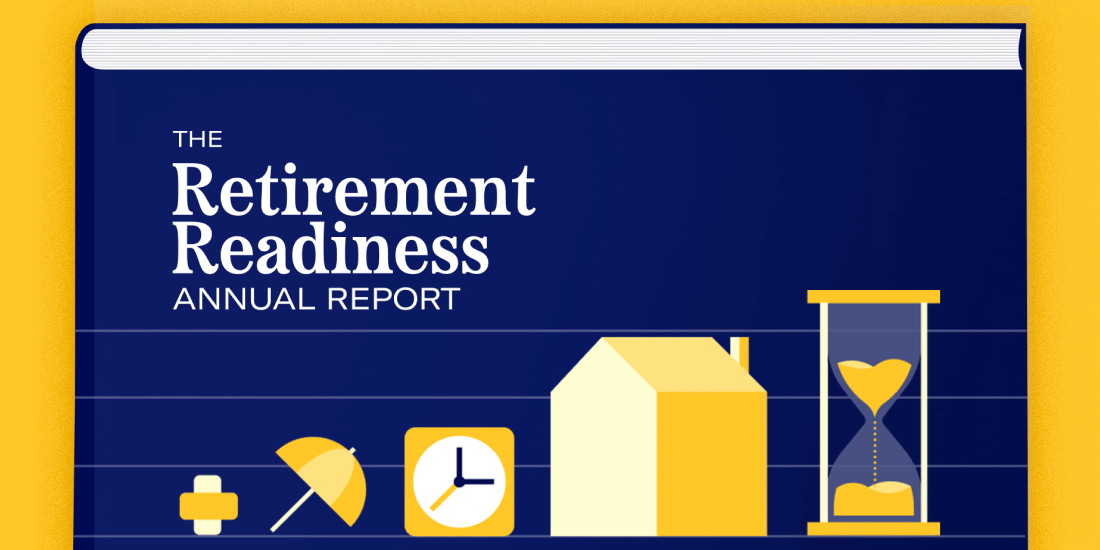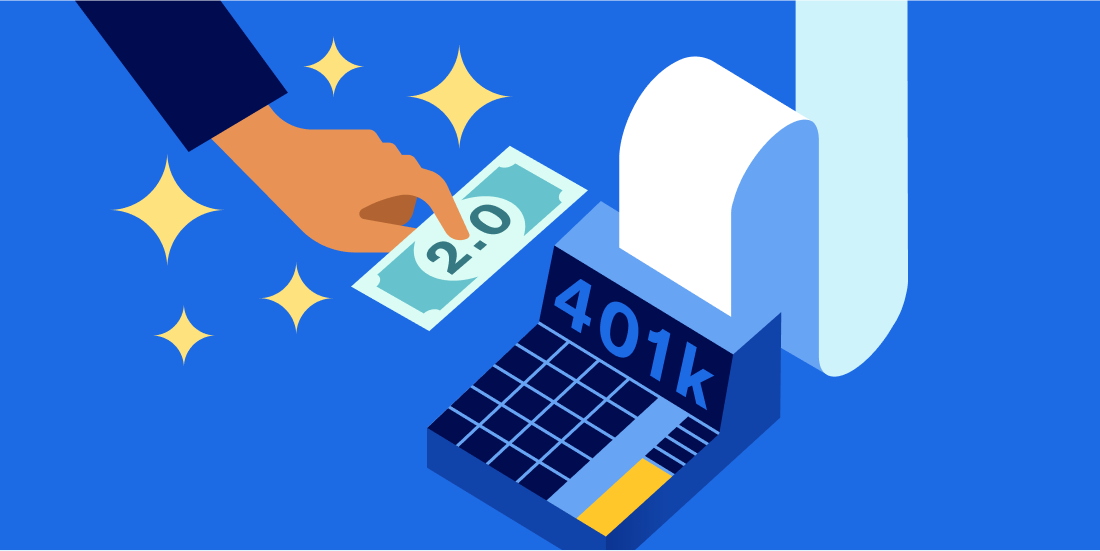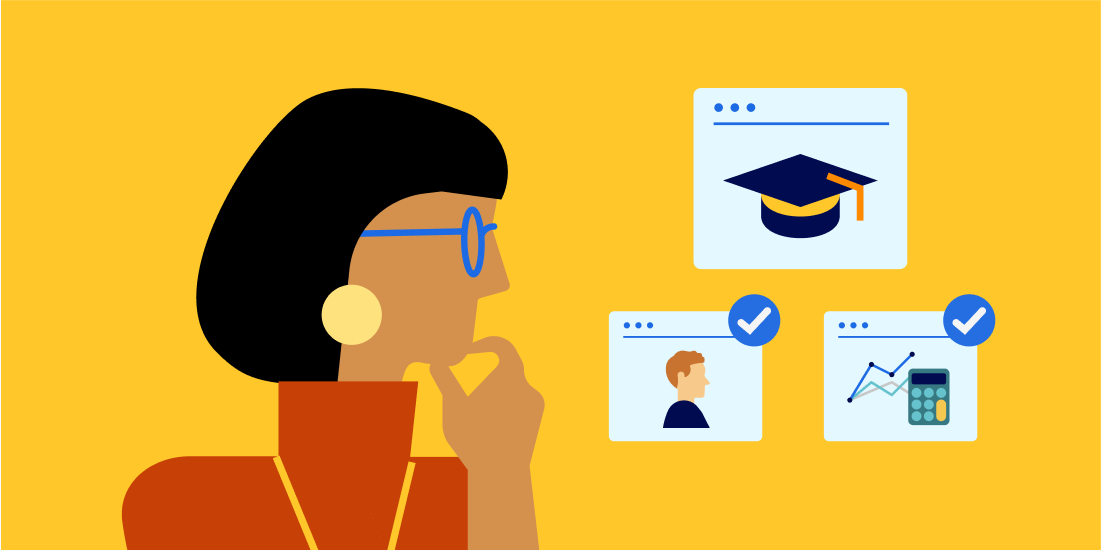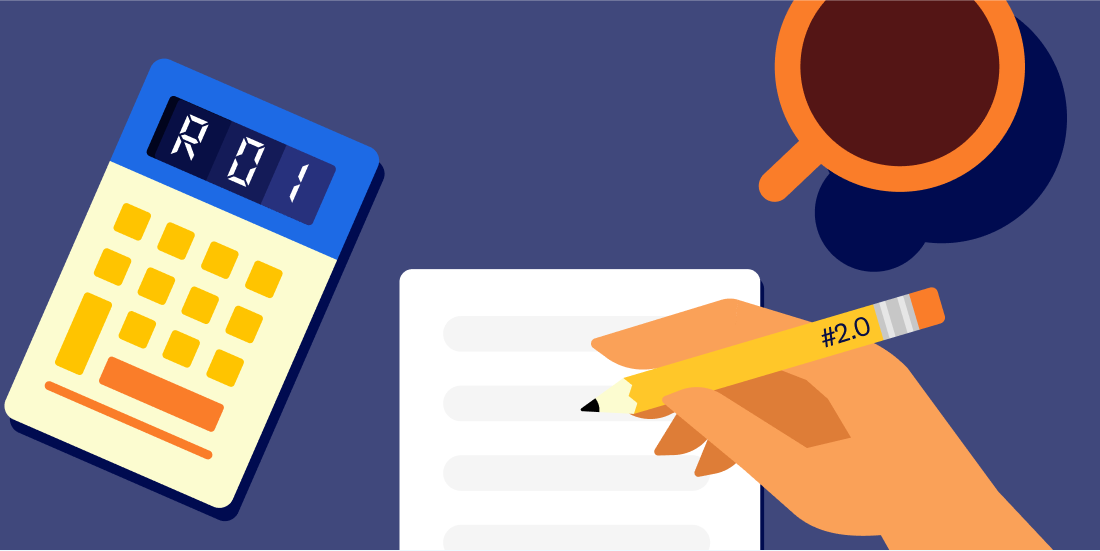Employer Benefits

Featured articles
-
![]()
Getting Started with Betterment at Work
Welcome! Here’s your step-by-step guide to getting your 401(k) up and running.
Getting Started with Betterment at Work Welcome! Here’s your step-by-step guide to getting your 401(k) up and running. You’ve done the due diligence. You’ve picked us as your 401(k) plan provider. You’ve signed a services agreement. Now what? Before we share the steps needed on your part to get your plan up and running, here’s another heartfelt thank you from us to you. Sponsoring a 401(k) plan is a big commitment on your part—the fiduciary responsibilities alone make it one. You’ve placed your trust in us as your plan provider, and we don’t take that lightly. It’s why we stay by your side every step of the way. Speaking of those steps, here are the first ones you’ll take after signing a services agreement: Step 1: Complete a questionnaire One business day after signing a services agreement, you’ll receive an email with a link to a questionnaire that confirms some basic information about your organization and sets up your plan in our system. This questionnaire can only be sent to one person at your organization, typically the person who’s been in contact with our Sales team. Step 2: Log in to your plan sponsor dashboard After completing the questionnaire, you’ll receive an email with a personalized link to your Betterment at Work plan sponsor dashboard, your home for ongoing plan management. After logging in, you’ll see a series of onboarding tasks to complete so we can finish setting up your organization’s plan. Let’s break down some of these tasks below. Step 3: Review and acknowledge the Investment Policy Statement (IPS) This outlines our general investing rules and can be found in your onboarding hub. Step 4: Purchase a fidelity bond Before your first payroll with Betterment at Work, you’ll need to purchase a fidelity bond. This is a form of insurance required of 401(k) plans that protects against acts of fraud or dishonesty. The bond must come from an insurance company certified by the Department of Treasury. While you’re completing steps 1-4, by the way, we’ll be simultaneously drafting your plan document and disclosure notices. Step 5: Review and sign your plan document Once your plan document is ready, you’ll receive an email to review and sign it. After you’ve signed the plan document, we’ll build out your plan on our platform. This can take up to two weeks to get all the details just right. Step 6: Tell your team about their new 401(k) provider! Right after you sign your plan document is a great time to let your team know about your company’s new 401(k) provider: Betterment! This gives employees ample time to get familiar with us before we email them directly with invitations to claim their accounts. It also helps ensure you give this notice the required 30 days or more before your first payroll with us. Not sure what to say? A suggested announcement message is available in your onboarding hub, and includes a link for your employees to register for our recurring Getting Started with your Betterment 401(k) webinar as well as select articles from our employee resource hub (betterment.com/my401k). Step 7: Add employees to your plan Once your plan is built out on our platform, the party really gets started. How employees are added to your plan depends on whether or not your payroll provider integrates with our platform: If your payroll provider is integrated with our platform, we’ll automatically sync employees. You’ll need to review and confirm the list is correct at least 30 days before payroll launch. If your payroll provider is *not* integrated with our platform, you’ll be asked to bulk upload a list of employees at least 30 days before payroll launch, then we’ll generate their accounts. Once your employees’ accounts have been created, we’ll send an email to each employee’s work email inviting them to claim their account and, in the process, create a login. If an employee already has a Betterment account via one of our individual products like an IRA, the claim email will go to their personal email address. Either way, they’ll need to use the unique link in this email to access their account the first time. Step 8: Prepare for your first payroll Check out your onboarding task hub for details on handling your first payroll. Step 9: Celebrate! Congratulations on uploading your first payroll with Betterment at Work! Your employees are now taking advantage of our clean design and straightforward tools to get more out of their 401(k)s. Their accounts will be funded once the ACH deposit is confirmed, which typically takes 1–3 business days depending on your bank. Once your onboarding process is complete, our Onboarding team will send you an email introducing you to our Plan Support team, who can help with all things related to your ongoing plan administration. To access your plan sponsor dashboard, log in here or by clicking "Log in" at the top of the page while visiting betterment.com/work. -
![]()
What state-mandated plans could mean for your small business
Increasingly, states are requiring that businesses provide retirement plans to employees. ...
What state-mandated plans could mean for your small business Increasingly, states are requiring that businesses provide retirement plans to employees. Learn if you may need to enroll in one of these state-mandated plans. State-mandated retirement plans are on the rise due to local and state legislation requiring businesses to provide retirement benefits to their employees. With the growing number of private workers not having access to these crucial benefits, many states decided they had to act. In 2015, the Department of Labor (DOL) issued guidance to support the states effort to help promote retirement benefits within their respective states. What are state-mandated retirement plans? When we talk about “state-mandated plans,” what we mean is that, increasingly, more and more states have passed legislation that require businesses to provide retirement benefits for their employees. In these states, the employer has the option of enrolling their employees in the state-sponsored program or sponsor their own workplace retirement plan offered by providers like Betterment. A state-sponsored plan is typically an individual Retirement Account (IRA) in which the employer sets up for their participants to contribute. Certain features may differ between states so it’s a good idea to check in with your state's specific program. Is a state-mandated retirement plan required for my company and what is the deadline to register? Legislation is continuously being updated for each respective state and new states are emerging with future plans to offer this. To date, we’ve tried to provide resources as enough information becomes available on Betterment’s website. You can find more details on states like California, New York, Oregon and Illinois at the links provided. In most states, the mandate only applies if an employer meets certain criteria, such as having been in business for at least 2 years and having greater than 9 employees, as an example. If you have questions, it’s best to reach out to a representative of your state directly or consult your state’s retirement website (if applicable). That said, a state-mandated plan might not be the best plan for your business. Read on to learn more of the pros and cons. What are the benefits of a state-mandated retirement program? Registration to the program can be relatively quick They have limited employer responsibilities & fees No fiduciary responsibility for the employer Participants gain access to retirement benefits for a modest fee Automatic features can force savings (from which employees can opt out) What are the downsides of a state-mandated retirement program? Deferral limits are much lower than 401(k) plans Employees not able to defer taxes if state plan only utilizes Roth May offer limited financial wellness tools compared to 401(k) providers like Betterment May not be as flexible compared to a 401(k) plan Program may not be as competitive with other retirement vehicles for talent acquisition Missed deadlines can cause penalties to the employer Overall, state-mandated programs are a good push to increase the overall percentage of workers who have access to retirement benefits. As of 2021, 32% of private industry workers do not have any access to retirement benefits. If you are or will be required to offer your employees retirement benefits as a result of a state mandate, please know that you have options in setting up your company’s retirement plan and we are here to help. So, what should I do? For any employer who is concerned with attracting and retaining talent in today’s market, offering a 401(k) has become a table stakes benefit. At the end of the day, state mandated plans are designed to help employees save for retirement, but they may lack some of the benefits that offering a 401(k) plan affords. In order to compete for talent, but also to benefit your business’s bottom line with tax savings, we recommend thinking about designing a more thoughtful retirement option that will help you and your employees in the long run. Want to talk about how? Get in touch. -
![]()
Your Employees Can’t Focus — and Money Worries Might be Why
Financial anxiety is impacting workers’ ability to do their jobs. Here’s how the benefits you ...
Your Employees Can’t Focus — and Money Worries Might be Why Financial anxiety is impacting workers’ ability to do their jobs. Here’s how the benefits you offer can do something about it. From stock market whiplash to escalating inflation, the past year provided plenty for your workers to worry about with respect to their finances. And while you might think they can keep calm and carry on, new research by Betterment at Work is showing these worries are impacting their productivity. More than half (54%) of the 1,000 full-time U.S. employees surveyed in our latest Financial Wellness Barometer say financial anxiety makes it difficult for them to focus at work. So what’s an employer to do beyond increasing base pay? You’d be surprised how much benefits can help. In addition to offering a barometer of workers’ overall financial wellness and the unique struggles they face, our annual survey zeroes in on the benefits employees value most. Our survey found that while turnover has cooled since a year ago, it’s still well above average, showing the Great Reshuffle is far from over. More than half (54%) of workers surveyed would be enticed to change jobs for better benefits. Which benefits exactly? A 401(k) is mentioned most often among desirable financial wellness benefits, but it’s not the stopping point. Hot on its heels are two other benefits, with each one illustrated by a troubling trend. Breaking the retirement bank, in case of emergency An alarming number of surveyed workers (more than one-in-four) tapped into their retirement accounts to pay for short-term expenses. This behavior not only has big implications for their retirement goals, but can quickly become a bad habit. Instead of getting a high yield on cash set aside for short-term expenses, like the variable 4.75%* offered in a Betterment Cash Reserve account, savers who dip into their retirement accounts early are, with few exceptions, slapped with a 10% penalty by the IRS. All of this points to a notable lack of emergency funds—and explains why an employer-sponsored emergency fund is the second-most desired benefit beyond a 401(k). These funds act similar to a 401(k), with contributions automatically coming from a worker’s paycheck, albeit without the tax benefits of a retirement account. At a minimum, employers can help educate their workers on emergency funds and how to build them. Feeling the squeeze from student loans Nearly half of Millennial and Gen Z workers surveyed currently hold student loan debt — and a lot of it. Among all workers surveyed who hold this type of debt, the majority (59%) owe at least $10,000. Payments on federal student loans may still be paused through at least the first half of 2023, but the previously-announced $10,000 of debt relief on said federal loans is now in limbo. And with this much student debt saddling Americans, saving for retirement will likely continue taking a back seat to paying down student loans. This also shows why greater employer support would be welcome in this space. That support can take the form of 401(k) add-ons like our Student Loan Management.
All Employer Benefits articles
-
![]()
The key factors holding back your employees’ retirement readiness
The key factors holding back your employees’ retirement readiness And how the types of benefits you offer can help. Broadly speaking, the economy did alright in 2023. Inflation slowed, stocks rallied, and employment remained strong. But you wouldn’t know it by looking at the current mood of American workers. According to our latest annual survey of 1,000 full-time employees, their levels of financial wellness trended down in 2023 at the same time their financial anxiety climbed by seven percentage points. So what gives? We sifted through the data and saw several trendlines emerge. Explore them in full detail in our Retirement Readiness annual report – and keep reading below for a preview. Inflation’s ripple effect on retirement Inflation slowed significantly in 2023, but that’s not to say that all prices fell. The average American household spent $709 more per month in 2023 compared to 2021 on things like rent, groceries, and gas. Until wage growth catches back up to inflation, workers will continue to feel their paychecks pinched, and two casualties are taking shape as a result: Emergency funds: Although more than half (52%) of employees reported currently having an emergency fund, that’s a 7% drop from 2022, and 14% decrease from 2021. Retirement savings: A worrisome 3 in 10 workers tapped into retirement savings in the past year to pay for short-term expenses, a significant setback for their long-term goals. All of this has left workers feeling stressed. More than half (58%) went so far as to say the anxiety makes it hard for them to focus at work. But our research shows that some employer support and benefits can go a long way toward calming the waters. The growing role of financial benefits in retention If short-term expenses are depleting workers’ savings, it’s no surprise that a strong 401(k) and financial wellness benefits program remains at the top of workers’ wish lists. The importance of these benefits continues to grow as well, with 70% of workers saying financial wellness benefits are more important now than a year ago. A growing percentage of workers (60%) even say they’d be enticed to leave their job for better financial benefits. Student loan debt, however, continues to prevent the adoption of financial benefits for many. 64% of workers said student loan debt impacts their ability to save for retirement, and when asked why they don’t take advantage of their employer’s benefits, by far the most common reason was their paycheck simply won’t stretch that far. On this front, good news is just around the corner. Thanks to the SECURE 2.0 Act, employers will soon be able to offer a 401(k) match on their employees’ qualifying student loan payments, helping workers tackle two goals at once. -
![]()
How your 401(k) plan can help boost employee financial wellness (and productivity)
How your 401(k) plan can help boost employee financial wellness (and productivity) Financial stress is hurting productivity. Here’s how you can help change that at your business starting with your 401(k). Not only does financial stress make an individual’s personal life more difficult, it can hurt their employer's bottom line. As business leaders, we are in a position to make a positive impact on our employees’ lives and our business performance. Three different studies, one diagnosis Three national studies, including our own, found that financial stress negatively impacts work performance. PwC found that 60% of full-time employees are stressed about their finances and one in three full-time employees says that money worries have negatively impacted their productivity at work. Morgan Stanley found that 66% of employees agree that financial stress is negatively affecting their work and personal life. Our own study at Betterment at Work found that 46% of workers said that financial anxiety impacts their ability to work all or most of the time. The problem is clear but what do we do about it? The right benefits can help ease the pain When asked to rank potential financial wellness benefits that an employer could offer, employees ranked a 401(k) plan first followed by 401(k) matching contributions. These are some of the additional findings in our 2022 Betterment at Work Financial Wellness Barometer survey. If you offer a 401(k), it may be your core financial benefit but it isn’t the sole remedy. Our study also found that 93% of employees said it was at least somewhat important that their employer provides financial wellness benefits. Also, the demand for these benefits is increasing, with 68% saying financial wellness benefits are more important to them now than they were a year ago. It’s important to look at how you can build financial wellness features around your 401(k) plan to support your employees’ financial lives—and your business’s future. A comprehensive approach to wellness that starts with your 401(k) Knowing the needs of a modern workforce, at Betterment at Work, we’ve built a suite of financial benefits designed to support your employees, starting with your 401(k) plan. We believe that evolving your benefits with the needs of your workforce can help provide a strategic advantage in attracting and retaining talent. At our core is our modern 401(k) platform: Your 401(k) plan should be easy to manage for you and easy to use for your employees. Our technology streamlines this, whether via integrations with common payroll providers or through our intuitive platform that helps employees invest in diversified portfolios of generally low-cost ETFs. Enhancing your 401(k) plan: We’ve built additional benefits that integrate with our 401(k) platform to make managing benefits easier and reduce the financial stress that your employees carry. Student Loan Management Platform: Your employees can gain a clear financial picture of their student loans and their 401(k) in one place. They can get advice on paying down and prioritizing high-impact loans and set up additional payments toward paying off student loans. Plus, to support the SECURE 2.0 Act, we’ve built a time-saving tool to reduce manual work while processing student loan 401(k) matching contributions. 529 Education Savings: Including 529s in your benefits package helps employees tackle rising education costs and shows your commitment to their financial health. It’s easy to manage, with 529s integrating into your existing benefits platform for a seamless experience. Financial Coaching: Help employees take better control of their finances with tailored 1:1 guidance and advice. Adding Financial Coaching to your Betterment 401(k) can help build a more confident, productive team. Plus, as a fiduciary, every financial advisor at Betterment is legally responsible to act in your employees' best interest. -
![]()
How tax credits can make offering a 401(k) affordable
How tax credits can make offering a 401(k) affordable See how new tax credits under the SECURE 2.0 Act could help with a new 401(k) plan’s implementation costs. After the passing of the SECURE 2.0 Act, CNBC published an article titled, “There may never be a better time to create a retirement plan.” The article largely focused on the increased tax credits smaller businesses can receive under the Act. These tax credits may amount to sizable savings for smaller employers looking to start a 401(k) plan. For that reason, we tend to agree with CNBC: this really may be the best time there has ever been to start a 401(k). What are the SECURE 401(k) tax credits? For businesses with 100 or fewer employees, there are three main tax credits to consider: Startup Tax Credit: Provides businesses with fewer than 100 employees a three-year tax credit for up to 50% of plan start-up costs. Increases the tax credit to up to 100% of the plan start-up costs for employers with 50 or fewer employees. The credit is based on the greater of $500 OR $250 per non-highly compensated employee (NHCE), capped at $5,000. Employer Contribution Credit: Offers a new tax credit to employers with 50 or fewer employees, encouraging direct contributions to employees, as much as $1,000 per participating employee with wages less than $100,000 (indexed annually). The credit covers the first five years of the plan allowing 100% of the employer contribution to be claimed in the first and second tax years, 75% in the third year, 50% in the fourth year, and 25% in the fifth year. The credit also applies to employers with 51-100 participants, but the amount of the credit is reduced by 2% per employee over 50 employees earning less than $100,000 per year. Automatic Enrollment Credit: Employers with new or established 401(k) plans that add automatic enrollment can take advantage of a $500 tax credit. Employers can claim this tax benefit for up to three tax years if they have 100 or fewer eligible employees. Sample scenario: Understanding the math To illustrate how tax credits can impact a business, consider the following hypothetical scenario for a business starting a new 401(k) with 25 participating NHCEs with wages less than $100,000 and a $3,000 average annual employer matching contribution per employee. Startup Tax Credit Employer Contribution Credit Automatic Enrollment Credit Total Credits Year 1 $5,000 ($250 per NHCE up to $5,000) $25,000 (100% or $1,000 max per employee) $500 ($500 per year) $30,500 Year 2 $5,000 ($250 per NHCE up to $5,000) $25,000 (100% or $1,000 max per employee) $500 ($500 per year) $30,500 Year 3 $5,000 ($250 per NHCE up to $5,000) $25,000 (75% or $1,000 max per employee) $500 ($500 per year) $30,500 Year 4 $0 (No credit) $25,000 (50% or $1,000 max per employee) $0 (No credit) $25,000 Year 5 $0 (No credit) $18,750 (25% or $1,000 max per employee) $0 (No credit) $18,750 Note: All information provided above is hypothetical for educational purposes only. For employers using the employer contribution tax credit, a tax deduction won't typically apply. Please review scenarios unique to your plan with your accountant to decide which tax credits and deductions are best for you. Three steps to make sure you get your tax credits Know the provisions: You’re already reading this, so you’re headed in the right direction. If you are considering starting a 401(k) plan, be sure to research both the tax credit and other SECURE 2.0 provisions. Know your plan: Whether you are starting a new plan or adding features to an established plan, to make the most of SECURE 2.0, you’ll need to review how your plan interacts with the law’s provisions and understand if your business is eligible. Talk to your tax adviser: Once you have a firm grasp of SECURE 2.0 provisions and how they impact your plan, reach out to your accountant and/or tax professional to plan for potential tax credits. They can walk you through your business’s situation and help you complete Form 8881. -
![]()
How to decide if you should offer a 401(k) match on student loan payments
How to decide if you should offer a 401(k) match on student loan payments SECURE 2.0 gives 401(k) plan sponsors the option to offer matching contributions on qualified student loan payments. Our three-step process balances the needs of your people, your budget, and your operations to help you as you decide if offering a 401(k) match on student loan payments is right for your company. Step 1: Assess your people’s needs When thinking about your team, it’s important to consider your current employees and future hires. The workforce is evolving and the needs of your employees may evolve as you hire. Your current employee’s needs: You’ll want to review your workforce’s current participation in your 401(k) plan. If you see that enrollment and savings are high, you may not have a need. On the other hand, if you see larger portions of younger graduates not enrolled, student loan matching may be a good fit. If feasible, talk with your employees to better understand their needs. Remember, it’s not always younger employees who are paying student loans. (Tip: If you offer other student loan benefits, like direct reimbursements, look at who is using those benefits and whether or not those employees are also contributing to their 401(k). A 401(k) match on student loan payments may be a good fit if you see a savings problem.) Your future employee’s needs: Your workforce in a few years might look different than your workforce today. Consider the types of employees you want to attract over the coming years. For recent grads, especially when hiring for key roles, this new type of 401(k) match could be a differentiating factor when deciding where to accept a job. Knowing your employee’s needs is crucial to engagement and retention, but next, you’ll need to know how much that will cost. Step 2: Review your budget There are two cost aspects to consider when budgeting for offering a 401(k) match on student loan payments. Matching contributions: You’ll need to review the cost of matching contributions, considering employees whom you previously did not provide with matching contributions. Your goal is to calculate the incremental cost. You may already be budgeting for these potential contributions if you include them in your salary match budget. But it’s important to estimate the actual increase you could see year-over-year in matching contributions. Operational costs: Depending on your 401(k) provider, you may have technology-related costs, although they should be minimal in most cases. Also, consider “soft costs” like employee time used to manage operating processes. With the right technology, these operational costs can be relatively low. The goal of reviewing your budget is to walk away with a confident estimate of the total annual costs of offering the benefit. Knowing that, you can decide whether the cost makes sense. Ultimately, understanding the ROI of the decision is fundamental for your business. That’s why we recommend taking it a step further and calculating the ROI of offering a 401(k) match on student loan payments. Step 3: Understand your operational needs Anything new in business usually comes with process changes. And that’s true if you adopt a 401(k) match on student loan payments. When analyzing how to efficiently manage this new plan feature, consider the following: Automation via technology: Work with your plan’s tech platform to understand their capabilities. Ideally, most of the process will be streamlined for you and your employees. Human intervention: There will most likely be some manual intervention, such as approving qualified student loan payments in order to process the matching contributions. Understanding who on your team will complete these tasks can help create an efficient process and avoid operational issues post-implementation. We recommend mapping out a process as you initially launch a 401(k) match on student loan payments. You’ll be able to train your staff, explain the feature to employees, and make adjustments as needed. -
![]()
The ROI potential of offering a 401(k) match on student loan payments
The ROI potential of offering a 401(k) match on student loan payments Over 20% of employees would consider leaving their jobs for a 401(k) match on their student loan payments. But can you afford to offer the benefit? In a 2022 Betterment survey of over 1,000 employees, we found that student loans are an important issue for many employees. 64% of employees said student loans have had an impact on their ability to save for retirement 21% of employees reported that a 401(k) match on student loan payments would entice them to leave their jobs. Generally, we believe that the more employees who participate in a 401(k) program, the less turnover a company will see. Data from payroll software provider Gusto backs up that belief. They report that employees with a 401(k) plan are 32% less likely to quit in any given month. We see a large opportunity for savvy employers to build stronger 401(k) programs to retain their employees. Adding benefits like a 401(k) match on student loan payments could be a difference maker. But how does an employer know if the costs of offering a 401(k) match on student loan payments is worth it? Let’s dive in and find out. First, some SECURE 2.0 fast facts Before we look at the potential ROI of this new match, let’s cover some fast facts about the provision included in the SECURE 2.0 Act. Effective date: January 1, 2024 401(k) student loan matching: Qualified student loan repayments could count as elective deferrals and qualify for 401(k) matching contributions from their employer. Employees who take advantage of this would be compliance tested separately. How it works: At a high level, there are three things to know. Employees are required to certify that they made loan payments. They do not have to show proof of payments if the employer doesn’t require it. An employer can rely on employee certification alone. Matching contributions must vest on the same schedule as salary deferral matching contributions. Employers can make matching contributions less frequently than salary matches, although contributions must be made at least once a year. Understanding the costs of a 401(k) match on student loan payments First, let's take a wider view of cost. Replacing a single employee may not directly show up on your company’s financial statements, but it's expensive, no matter the company, especially if it happens more than once. One report by SHRM cites employee replacement costs as being six to nine months of an employee’s salary. Another report by Gallup cites one-half to two times the employee's annual salary. Employee replacement costs to consider include: Hard costs: These are straightforward to quantify and include hiring costs like HR staff, technology, and job postings. Once an employee is hired there are also hard costs like onboarding training, new equipment, and processing paperwork. Soft costs: These can be murky to measure but impact every hiring decision. These include the time spent by employees who help with the hiring process, from interviews to position description reviews and onboarding planning. As a new employee joins the company, these costs continue with additional onboarding meetings and lowered productivity as the new team member gets up to speed. Now that you’ve considered the real costs of recruiting and onboarding a new employee (vs. retaining a good team member), we can talk about the cost of this new 401(k) match. Provision implementation costs may include: Participant Fee: If you are using a modern 401(k) tech platform, these costs are minimal often ranging from $5 to $10 per month. You can also consider passing these small costs on to the employee. Nondiscrimination testing: Depending on your 401(k) provider, an increase in participants may result in increases in fees for additional compliance testing. (Note: At Betterment at Work, there are zero additional compliance testing fees if your plan has an increase in participants.) Matching contribution costs: If more employees use the 401(k), contributions may increase, although some companies may have already budgeted for a portion of these in their overall 401(k) match budget. Administrative costs: Tracking self-certifications requires implementing a process. This can be reduced if your company leverages technology to streamline this workflow. There are costs to administering the 401(k) student loan match provision. But compared to losing a talented employee, provision costs may be far less. Think of the match benefit as an investment in talent. Calculating ROI of a 401(k) match on student loan payments It’s important to note that when calculating ROI for your company, you should take into consideration each employee’s unique value and the costs associated with replacing their role. To help illustrate, consider the following hypothetical example of an employee making $75,000 at a company offering a 6% 401(k) match. Estimated replacement costs: $37,500 to $150,000 one-time cost An employee making $75,000 could cost between $37,500 and $150,000 to replace using the benchmark of one-half to two times the employee's annual salary. Estimated 401(k) student loan match costs: $4,620 to $5,000 per year If that employee uses the 401(k) student loan matching program with a 6% match, the employer would pay $4,500 in matching contributions. We’ll add on $120 per year in estimated monthly participant plan fees plus potential administrative costs estimated at a few hundred dollars to process and test this employee’s student loan match. We see that with a full employer match plus administrative fees, we are still not even close to the costs associated with needing to replace the employee. It would take over seven years in 401(k) matching costs to reach the low-end cost of replacing the employee. That’s without considering the value a satisfied, tenured employee brings in workplace production, institutional knowledge, cultural contributions, and more. -
![]()
Don't have a 401(k) plan? Why now may be the best time to offer one
Don't have a 401(k) plan? Why now may be the best time to offer one Learn how the SECURE 2.0 Act can make it easier for your business to offer a 401(k) plan and attract top talent. A 401(k) plan. For many, that’s a boring topic. But for business owners and leaders—especially if you don’t offer one—a modern 401(k) plan could be your secret to building a strong, loyal workforce. Let’s dive in to see how a 401(k) could help you overcome hiring and retention challenges, and learn why now might be the time to start offering one. Your challenge: Attracting and retaining top talent People are leaving their jobs at record rates: In 2022, over 50 million people left their jobs according to FED data, setting a record, besting 2021’s nearly 48 million. People are leaving their jobs for various reasons: We surveyed 1,000 employees and found that burnout or work/life balance topped the list at 31% but 26% left because they found a job with better benefits. We also found that 51% said that a 401(k) from a prospective employer would entice them to leave their job. That number increased to 57% when a 401(k) employer match was added. The struggle to attract (and retain) top talent is real. But you have an opportunity. Your opportunity: Leveraging the SECURE 2.0 Act The SECURE 2.0 Act is packed full of 90-plus provisions. We've highlighted a few key provisions that make it easier to offer a 401(k) that benefits you and your employees. Some could reduce (or even pay for) your plan's implementation costs. Others help you capture the long-term employee retention benefit that a 401(k) provides. Please note that this is not intended as legal guidance or as a comprehensive resource on all SECURE 2.0 provisions. The information provided below is for education purposes only and is subject to change. Tax credits for small employer plans Quick facts: Effective date: December 29, 2022 Startup tax credit: Tax credits are available to offset the costs of a new plan for up to three years. According to the legislation, plan sponsors with 100 employees and fewer can claim up to $5,000 in their first year. Employer contribution credit: This clause allows eligible businesses starting a new plan after 12/29/22 to claim back costs associated with making employer contributions toward employees’ 401(k)s. If your company adopts employer contributions as a part of your plan design, you may be able to claim these costs for up to five years. Automatic enrollment credit: Employers that establish a new 401(k) plan after 12/29/22 with automatic enrollment can take advantage of this credit. Employers can claim this tax benefit for up to three tax years if they have 100 or fewer eligible employees. Your opportunity: Reduced plan cost: A tax credit reduces the amount of taxes you may owe. For smaller employers with lower plan costs, the tax credit may actually cover all 401(k) plan implementation costs in the first three years. Regardless, the SECURE 2.0 Act has made implementing a 401(k) more affordable for many businesses. Employers can offer a 401(k) match on student loans Quick facts: Effective date: January 1, 2024 401(k) student loan matching: Qualified student loan repayments could count as elective deferrals and qualify for 401(k) matching contributions from their employer. Employees who take advantage of this would be compliance tested separately. Your opportunity: Employee retention: If you have employees with student loans, often early in their careers, offering to match their loan payments with 401(k) contributions can help them jumpstart saving for retirement. This becomes an attractive benefit that can help retain talent. Required automatic enrollment and escalation Quick facts: Effective date: January 1, 2025 Auto-enrollment: Requires plans established after 12/29/22 to automatically enroll employees at a default rate between 3% and 10%. Auto-escalation: Requires plans to automatically increase contributions by 1% per year to at least 10% (but no more than 15%). Exemptions: Small businesses with 10 or fewer employees and businesses newer than three years old are exempt. Opt-out: Employees can change their contribution rate or opt out of the plan at any time. Plans must offer participants who are automatically enrolled the ability to request a withdrawal of their contributions within 90 days of their first contribution. Your opportunity: Employee retention and financial wellness: In a summary of the SECURE 2.0 Act, the United States Senate Committee on Finance states that auto-enrollment “significantly increases participation” in 401(k) plans. As an employer, the sooner your employees see value in their benefits, the sooner they may see the value in working for your business. Plus, saving earlier in life sets up employees for long-term financial health—and your business can play an important role in that process. Your solution: A modern 401(k) platform Because of the SECURE 2.0 Act, now may be the best time in recent history for many businesses to start offering a 401(k). But simply offering a 401(k) isn’t enough. You’ll want to do your research to make sure your plan has the features and technology to make your life, and your employees’ lives, easier. At Betterment at Work, we’ve designed a modern 401(k) platform for you and your employees: For you: We’ve streamlined onboarding, payroll integration, and detailed reporting—all accessible on one easy-to-use dashboard. Plus, we’re here to help make meeting SECURE 2.0 Act requirements simple. Save time on managing 401(k) student loan matches, auto-enroll, and auto-escalation through our simplified admin tools. For your employees: Employees can link outside accounts, get retirement advice, and take advantage of automated tax-smart strategies. Plus, our Student Loan Management feature helps employees pay off their debt while gaining a 401(k) contribution if you choose to match their loan payments. For a full overview of what to consider when building out a 401(k) plan, check out our Plan Design article. -
![]()
Does your current 401(k) plan help you leverage the SECURE 2.0 Act?
Does your current 401(k) plan help you leverage the SECURE 2.0 Act? Learn the two strategic areas that can give your 401(k) a competitive advantage as you navigate SECURE 2.0. Plus, get resources to help you along the way. With over 90 provisions, the SECURE 2.0 Act has created one of the largest opportunities in history for employers to support their employee’s financial wellness. But the Act is complex and it’s a lot to manage. This article covers what you should expect from your 401(k) partner as you navigate the Act, along with how to help your internal leadership team understand the Act’s implications. With a carefully planned strategy, you can get the most out of SECURE 2.0. Your opportunity: Leveraging the SECURE 2.0 Act The Act positions savvy HR and business leaders to create highly attractive 401(k) programs. Based on our research, 51% of employees would consider leaving their job for a 401(k), and if you add on employer matching contributions, the figure jumps to 57%. Some of the major SECURE 2.0 provisions that your 401(k) program needs to consider include: Optional 401(k) match on student loan payments Required auto-enrollment and auto-escalation Period of service requirements for long-term, part-time workers reduced to two years But how do you go about making the most of these provisions, with the goal of increasing the ROI on your 401(k) plan? Beyond understanding the provisions, we recommend focusing on two strategic areas to help give you and your executive team a competitive advantage: Technology Insights Here’s what you need to know to get the most from your 401(k) plan. While the information provided about SECURE 2.0 is accurate based on Betterment’s current understanding and analysis, the details described in Betterment’s content are subject to change based on additional regulatory guidance. Betterment content should not be considered legal or tax advice. Technology = Automation + Integration With SECURE 2.0, now is a good time to review if your 401(k) technology, including your recordkeeper and internal processes, are equipped to help you implement the new provisions. The Act is designed to help people save for retirement, but if your 401(k) platform isn’t built on modern technology, you may struggle to incorporate the provisions efficiently. You could be stuck with hours of costly manual work. Your 401(k) technology partner should be able to: Automate: You shouldn’t be manually updating tasks like auto-enroll and auto-escalation. If you choose to offer matching contributions on student loan payments, make sure your platform has the technology to process those transactions, as well. Integrate: Data management is only becoming more important in implementing the new provisions. You’ll want to make sure you have integrations with your payroll provider that allow you to move the right data between systems. See if you can integrate data like hours worked to allow for easier implementation of provisions like plan participation by long-term, part-time workers. Also, as provisions like the mandatory Roth catch-up contribution (which has been delayed until 2026) go live, your 401(k) platform should facilitate processing the right data to help stay in compliance and reduce manual work. Insights = Facts + Guidance SECURE 2.0 leaves you facing a myriad of information, and you need expert insights. It’s not enough to simply know the facts. You—and your internal stakeholders—need the right insights to make decisions that will help retain employees and generate a positive ROI for your business. Your 401(k) partner should be providing you with: Updates on SECURE 2.0 facts: The SECURE 2.0 provisions are important to understand so you know how your plan will be impacted—especially as they evolve with guidance from the government. Guidance beyond the facts: To create value with your 401(k), your plan partner should help you think through which optional provisions make sense to implement and how to get the most out of implementing mandatory provisions. For example, how to determine if 401(k) matching contributions on student loan payments are right for your business or how to set your auto-enrollment and auto-escalation levels. Just as important, look for a partner who can help you plan and send communications to your employees so they understand how they can get the most out of your plan. Setting your leadership team up for SECURE 2.0 success As you analyze your current 401(k) plan and its abilities to leverage the SECURE 2.0 Act, be sure to consider the perspectives of your organization’s leadership team or 401(k) committee. They will most likely want to understand how your current plan provider will help implement plan changes. Be prepared to answer the following questions for each leadership role. This is not an exhaustive list of questions, and roles may be slightly different at your company, but it should help you get into the mindset of each stakeholder. CEO / Board of Directors: What are the overall costs and/or ROI of implementing SECURE 2.0 provisions? What is the implementation plan to successfully roll out the changes? Is the 401(k) plan competitive within the industry? Chief Financial Officer / Chief Operating Officer: How will adopting SECURE 2.0 provisions impact plan administration efficiency and cost? Who is responsible for administering provisions and processes? Chief Risk / Compliance Officer: Are provision implementation deadlines being met? How does adopting these provisions impact 401(k) nondiscrimination testing? Are policies, procedures, and plan amendments being updated as needed? Chief Human Resources Officer: What is the best employee communications approach to implementing SECURE 2.0 provisions? Are current HR vendor integrations, like payroll, sufficient to implement SECURE 2.0 efficiently? Do the provisions have implications on the 401(k) plan’s role within the organization’s total rewards program? Your 401(k) plan provider should be a resource to help answer these questions as you implement SECURE 2.0 provisions. We have resources to help you leverage SECURE 2.0 Our tech is built so you can run a modern 401(k) program. Our platform helps streamline processes like: Automation: Enabling auto-enrollment and auto-escalation customized to your plan. Student Loan Management: A platform for you and your employees, including the ability to process 401(k) matches to student loan payments. Payroll Integrations: Integrating with payroll and benefits providers to make sure your data gets where it needs to go, to help reduce manual processes as you implement SECURE 2.0. Our 401(k) content provides insights to help you leverage SECURE 2.0. Our team of experts has created resources to help you increase the ROI on your 401(k) program. Free Email Course: We offer a free, six-month email series called “Beyond the Facts: SECURE 2.0” that guides you through some of the most important SECURE 2.0 decisions business leaders need to make, from implementing provisions to communicating with your employees. SECURE 2.0 Resource Site: Plus, we have a content library designed to brief you on the most important aspects of SECURE 2.0 so you can stay in the know and build a 401(k) that fits into your total rewards program. -
![]()
Employers Step Up and Stand Out with Student Loan Help
Employers Step Up and Stand Out with Student Loan Help Here's why more companies are taking an active role. Your staff could very well be loaded up with student loan debt. Heck, you might even have some yourself. None of this is news. But as student loan debt continues to snowball in the U.S.–up to $1.75 trillion as of July 2022– you may be less familiar with the all-hands-on-deck mentality many employers are now taking toward the problem. Companies are getting off the sideline and taking a more active role in helping their workers manage student loans. Here’s how and, more importantly, why. Why companies are adding student loan help to their benefits toolbox The story of how companies came to help with student loans is really the story of the 401(k), or more specifically, why so many employees weren’t touching theirs. A mystery at first, the answer has grown increasingly clear: it’s tough to save for the future when you’re still paying off the past. For employees with student loans, every dollar in their paychecks can represent a zero-sum decision. Do they service their student loans or contribute to their 401(k)? In recent years, however, both employers and employees have signaled a growing expectation to work together on the issue. More than half (57%) of employees believe their company should help them pay off student loans according to exclusive Betterment research on employee financial wellness. Some companies have taken the issue to heart. By complementing their 401(k) with student loan management, they can offer a more holistic compensation package, one that accounts for the drag student loan debt now has on the workforce as a whole. The benefits are numerous: Recruiting and retention advantages When it comes to benefits packages, 401(k)s have become the standard. Translation: beyond a generous match, they don’t always differentiate your company from others. Offering something of unique value can not only attract top talent but keep it. Nearly 9 out of 10 (86%) of young workers say they'd stay at least five years with a company if it helped with student loans. Two-way tax benefits Just like with 401(k)s, offering your staff a student loan management tool is one thing, but the real magic lies in the match. Why is that? It unlocks tax perks for both parties. Thanks to legislation passed by Congress in 2020 (aka the CARES Act), companies who maintain a qualified Section 127 Program can make tax-free annual contributions of up to $5,250 toward their employees’ student loans. This translates into a benefit that lowers both your company’s payroll taxes and your employees’ income taxes. This tax-free treatment is approved through 2025. What to look for in a Student Loan Management tool First and foremost, you want a streamlined admin experience. For many benefits admins, adding another vendor on top of their 401(k) provider is a non-starter. With Betterment, you can get both benefits synced and served up at the same time. If you’re already familiar with Betterment’s 401(k) product, Student Loan Management now slots into the all-in-one dashboard. Last but certainly not least, you want a tool that also makes your employees’ lives easier. Similar to the admin experience, we give your participants a clearer financial picture of their student loans and 401(k) all in one place. We also go the extra mile by helping them balance the competing demands of debt and investing. If you’re interested in bringing Student Loan management to your team, please get in touch. Student loan management services made available in partnership with Spinwheel Solutions, Inc.











